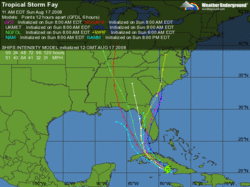The Tramway is an 8,500 foot climb in a small, often swinging, car. The propulsion is delivered by thick cables strung over a series of isolated towers. Trust me–I’m describing Helaine’s ultimate nightmare scenario!
 “Why don’t you go?” Helaine asked. She was suggesting I ride the Palm Springs Aerial Tramway on our last day in town.
“Why don’t you go?” Helaine asked. She was suggesting I ride the Palm Springs Aerial Tramway on our last day in town.
It was a tough choice because I knew she wouldn’t go. Helaine has a real fear of heights.
The Tramway is an 8,500 foot climb in a small, often swinging, car. The propulsion is delivered by thick cables strung over a series of isolated towers. Trust me–I’m describing Helaine’s ultimate nightmare scenario!
 Mount San Jacinto is an amazing camera platform¹ and, of course, that was the appeal for me. The Coachella Valley spreads out below with distant mountains marking its eastern edge.
Mount San Jacinto is an amazing camera platform¹ and, of course, that was the appeal for me. The Coachella Valley spreads out below with distant mountains marking its eastern edge.
The day was clear and mild. I threw on my jacket knowing the temperature would drop quickly with altitude. Even from the valley floor it was easy to see there was snow at the summit.
The Tramway is a short drive from Downtown Palm Springs. After turning off the main road you climb 2,500 feet before hitting the visitor center. Signs warn drivers to turn off their air conditioning lest they overtax and overheat their car!
 The ride to the top was uneventful. The cable car makes two full rotations as it ascends. That assures everyone a good view.
The ride to the top was uneventful. The cable car makes two full rotations as it ascends. That assures everyone a good view.
I wish there were more open windows. Shooting through the glass is not the way to get good photos.
It was cool at the top, probably in the 40°s. The snow on the ground was unlike any we get here in Connecticut. It was ‘dry’ and compressed. Snow on this summit tends not to melt but sublimates away into the very dry air. There were snowy areas and clears areas, but minimal mud and no puddles!
 My day at the top (December 4, 2009) was nearly dead calm. A storm moving through yesterday brought the temperature down to 14.8° with wind gusts to 81 mph! I timed it right.
My day at the top (December 4, 2009) was nearly dead calm. A storm moving through yesterday brought the temperature down to 14.8° with wind gusts to 81 mph! I timed it right.
There’s a patio which rings the Mountain Station. From there I shot a few dozen photos of the valley below. Then I headed around back. West of the station are trails running through high mountain valleys. I picked the seemingly easy Nature Trail and began to walk.
The trail itself is easy–just 3/4 of a mile through mainly flat ground. Getting to and from the trail is a little more problematic down a long, winding, steep ramp.
 Added to the weight of my camera gear and steepness of the ramp is the altitude. Up on Mount San Jacinto each breath of air provides nearly 1/3 less oxygen than at sea level! This is really thin air. You feel it.
Added to the weight of my camera gear and steepness of the ramp is the altitude. Up on Mount San Jacinto each breath of air provides nearly 1/3 less oxygen than at sea level! This is really thin air. You feel it.
The trail itself was really pretty, but I was alone and missed Helaine. Is that too sentimental? I can’t help myself–it’s true. I know. This wasn’t the place for her. I still wish there was some way we could have shared the experience.
 This was real wilderness. My cellphone showed “No Service.” That’s the 21st Century way of proving you’re removed from society.
This was real wilderness. My cellphone showed “No Service.” That’s the 21st Century way of proving you’re removed from society.
It was a different story at the Mountain Station where I got email, answered phone calls and sent text messages.
There’s something wrong about that, isn’t there? I should have left the phone in the car, but I’m too weak. I need my tech fix.
I killed a little time hoping for some good nighttime shots with the lights of Palm Springs in view. That was a photographic failure. I never did get a really good, sharp shot after the Sun went down.
I caught the 5:00 PM trip to the bottom and was back at the hotel 10 minutes later. It was an afternoon well spent.

¹ – Here, as with most of the entries on this blog, clicking a photo will get you a larger version with more detail.
 The snow has come and gone. There’s never a bullseye, but the forecast was reasonably close. If success is judged by number of complaints, or lack thereof, I’m doing fine. Here are the final DOT numbers. I have also added the Boston and New York NWS snow totals, which include Connecticut, for the Dec 20-21, 2009 storm at the end of this entry.
The snow has come and gone. There’s never a bullseye, but the forecast was reasonably close. If success is judged by number of complaints, or lack thereof, I’m doing fine. Here are the final DOT numbers. I have also added the Boston and New York NWS snow totals, which include Connecticut, for the Dec 20-21, 2009 storm at the end of this entry.











